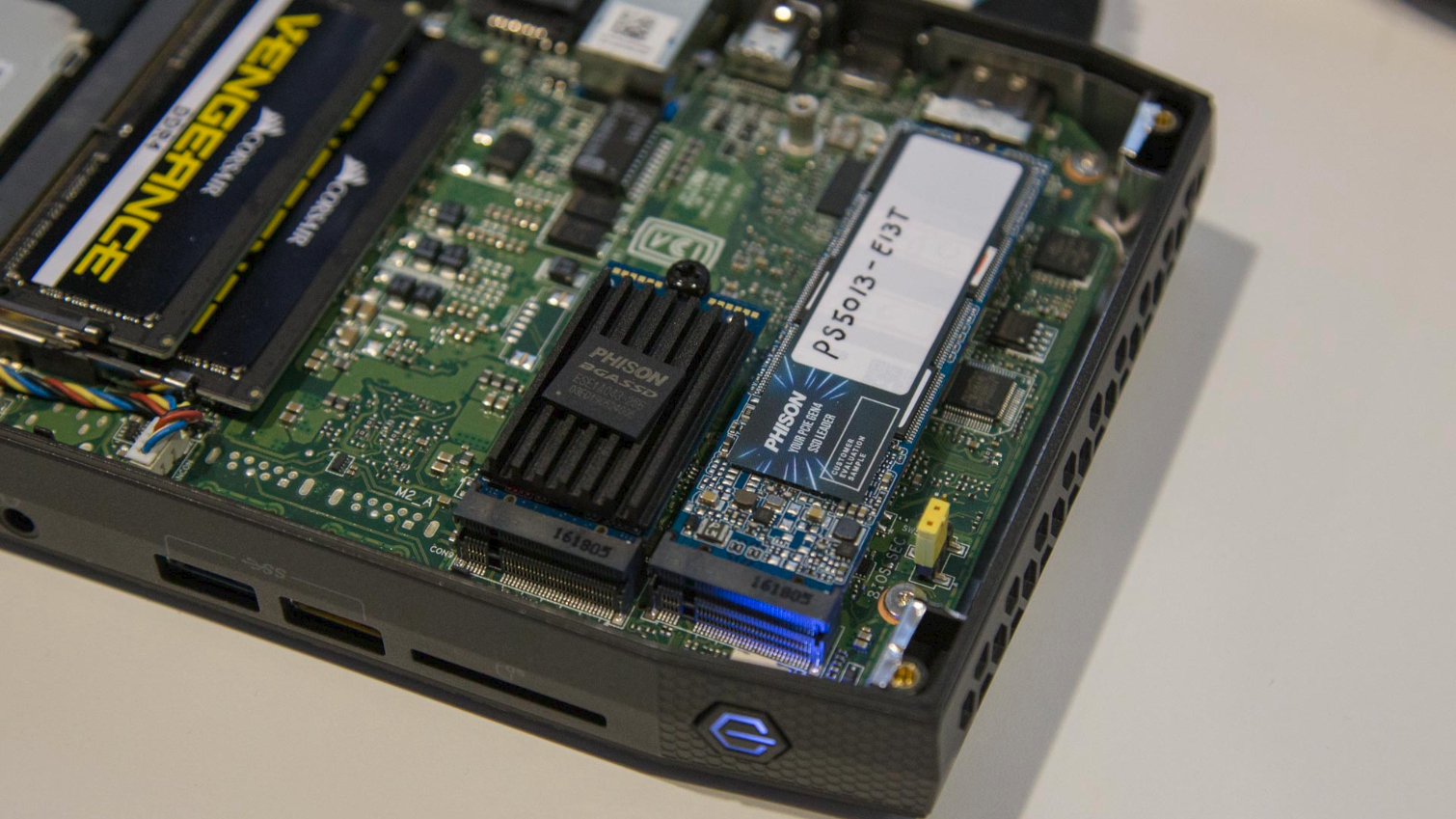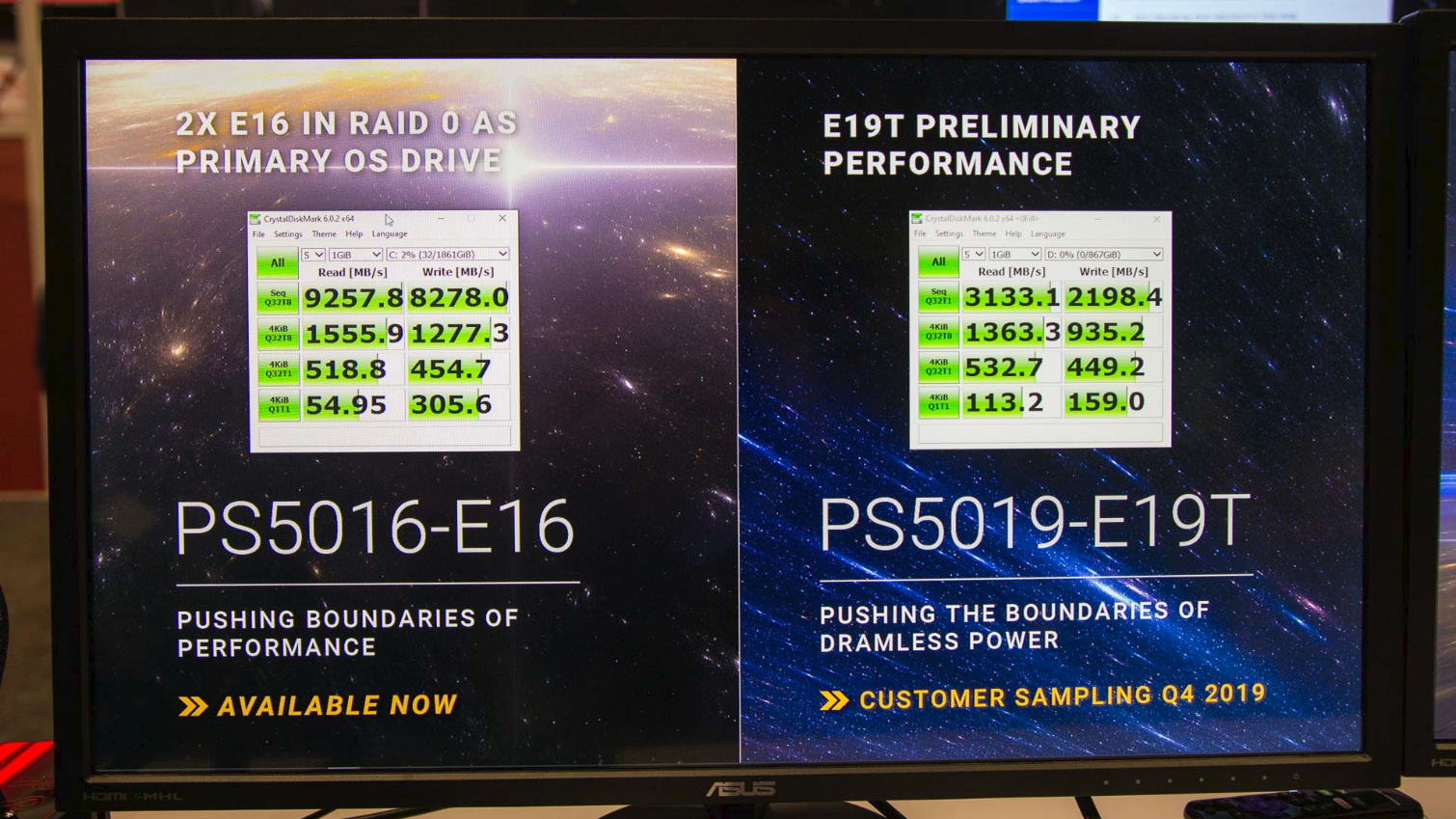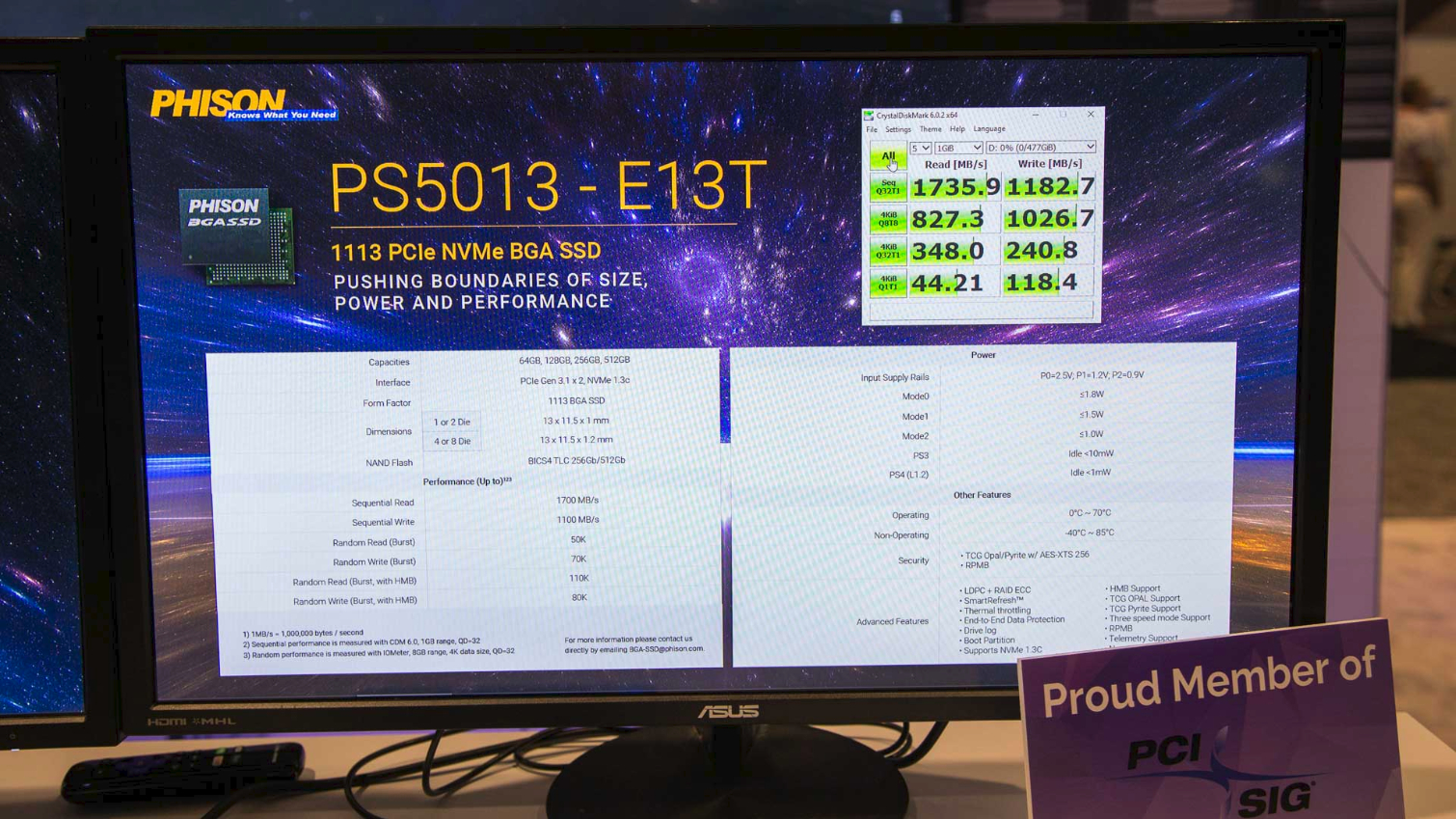Phison Brings the PCIe 4.0 Pain: E18-Powered SSDs to hit 7 GBps and One Million IOPS
Phison was the first SSD controller vendor to power blazing-fast PCIe 4.0 SSDs, but it has an even newer PCIe 4.0 SSD controller in the works that will hit 7 GB/s and one million IOPS.
We were fortunate enough to secure an advanced preview of Phison's PS5016-E16 controller a few months ago before products hit the market, and thanks to the company’s plan of attack, it aligned the launch of the world's fastest spec’d SSDs alongside AMD’s Ryzen 3000 launch. The company even had two of those SSDs in RAID 0 on display at the Flash Memory Summit hitting speeds of 10GB/s. After the successful launch of its speedy PCIe 4.0 SSDs, now the company is focused on dialing up the performance even further, but this time with a new ground-up design.
While it wasn’t on display, Phison updated us on its PS5018-E18, which will be sampling early next year. While the E16, the company's inaugural PCIe 4.0 SSD controller, was designed around an older design paired with a PCIe 4.0 x4 connection, the E18 brings an entirely new design with even more performance on tap. The E18 has a robust feature set and shares the E16’s fully-dynamic SLC cache, which helps improve performance during bursty workloads, but it also has Phison's new fourth-gen LDPC error correction engine.
Phison's older controllers feature one or two ARM Cortex R5 CPU cores, but pushing faster speeds requires more compute grunt power, so the E18 comes armed with three cores alongside the company's CoXprocessor. With that extra core and a smaller 12nm manufacturing process, the SSD flies to 7GB/s and can deliver up to one million IOPS. That’s right, one million IOPS out of a really small eight-channel NVMe 1.4-compliant controller.
Phison’s E19T slots in as a DRAMless option that's focused on power efficiency and cost reductions. This new controller is almost ready for vendors and should sample in Q4 this year. While it won’t interface with DRAM on the device itself, which reduces the bill of materials (BOM) cost, it uses the NVMe spec's handy HMB feature to help alleviate the pain. HMB enables the controller to offload FTL caching to a small portion of the host’s DRAM instead.
Architecturally, it is built on TSMC’s 28nm technology process, and in practice, consumer retail products will support capacities up to 2TB. This controller also features four NAND channels, which results in half the chip enables (CEs), and it has just one ARM Cortex R5 CPU core. Currently, the E16 features two cores and double the NAND channels. But even with half the computational power potential, because the E19T was designed with the PCIe 4.0 spec and higher NAND speeds in mind (1,200 MT/s vs. 800MT/s), it still has enough grunt to outrace most high-end devices on the market.
As you may have seen, the Phison's PCIe 4.0 E16 hits up to 5/4.4 GB/s read/write speeds and up to 750,000 IOPS, while the E19T will hit just slightly lower specs of 3.8GB/s read/write and 440,000/500,000 IOPS. To keep things in perspective, this is still amazing to see out of a four-channel, DRAMless design.
Get Tom's Hardware's best news and in-depth reviews, straight to your inbox.
Additionally, while the latest PCIe 4.0 spec brings along a lot of new performance possibilities, there is still a market for PCIe 3.0 devices. Phison also displayed its E13T controller (and a BGA variant) that are already sampling. This PCIe 3.0 x4 NVMe 1.3-compliant controller can hit speeds of up to 2.5/2.1 GB/s read/write in normal form factors, and up to 1.7/1.1 GB/s in the PCIe 3.0 x2 BGA form factor. It can also reach up to 295,000/430,000 read/write IOPS, and like the E19T, features a DRAMless architecture for cost and power efficiency. This controller is already sampling, and we may see retail products hit the market by Q4 this year.

Sean is a Contributing Editor at Tom’s Hardware US, covering storage hardware.



